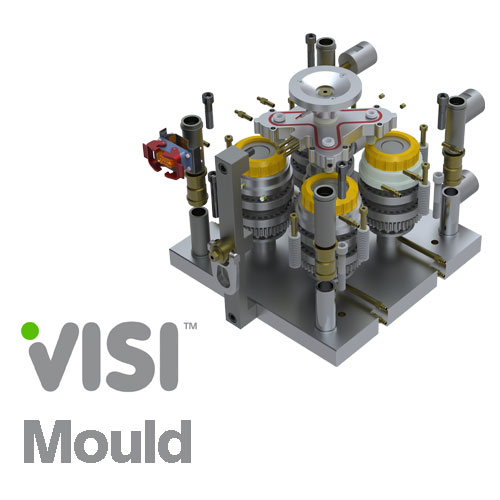Products
VISI Mould provides the complete mould tool design solution based on industry specific automation that guides the user through the mould development process.
VISI Mould provides the complete mould tool design solution based on industry specific automation that guides the user through the mould development process. Dynamic operation previews provide the designer with a 'real time' view of how component changes will affect the tool design.
Features at a glance:
Automatic recognition of design changes
Draft angle visualisation
Multiple split line calculations
Core & cavity model separation
Dynamic 3D tool design
Customisable supplier catalogues
Intelligent component editing
Slides, lifters and flexible up & away units
3D cooling with collision check
Associative tool detailing
Automatic B.O.M. creation
Seamless link to manufacturing
Extensive range of CAD interfaces. VISI can work directly with Parasolid, IGES, CATIA v4 & v5, Pro-E, UG, STEP, Solid Works, Solid Edge, ACIS, DXF, DWG, STL and VDA files. The extensive range of translators ensures that users can work with data from almost any supplier. The ability to skip corrupt records during the import process provides a platform from where the most inconsistent data can be managed. Very large files can be handled with ease and companies working with complex designs will benefit from the simplicity with which their customer's CAD data can be manipulated.
True hybrid modelling. VISI provides a dynamic structure from where it is possible to work with either solid, surface, wireframe or a combination of all three without any restrictions. Solid modelling has become a fundamental cornerstone of design but is often limited to prismatic or basic geometry. Solid modelling commands include boolean technology such as unite, subtract, extrude, revolve, sweep, cavity, intersect and hollow. Surfacing technology however provides a different set to tools and techniques for more organic, free-form geometry creation. Surface modelling functions include ruled, lofted, drive, sweep, n-sided patch, drape, tangent, draft, revolved and piped surfaces. These modelling commands combined with advanced surface editing make it easy to heal imported geometry or construct the most complex 3D data.
Model validation and preparation. Essential model preparation tools are available to automatically inspect model data for moulding feasibility, redundant geometry, sliver faces and geometry inconsistency. The draft analysis provides the ability to quickly interrogate a model using user-defined colour draft zones to easily identify undercut and non drafted faces. Duplicate geometry can be highlighted, extracted and automatically isolated into warning layers. Sliver face detection and automatic removal provides the ability to delete potentially problematic faces whilst maintaining solid topology. Finding potential design issues at this early stage will generate huge time savings further along the design process.





